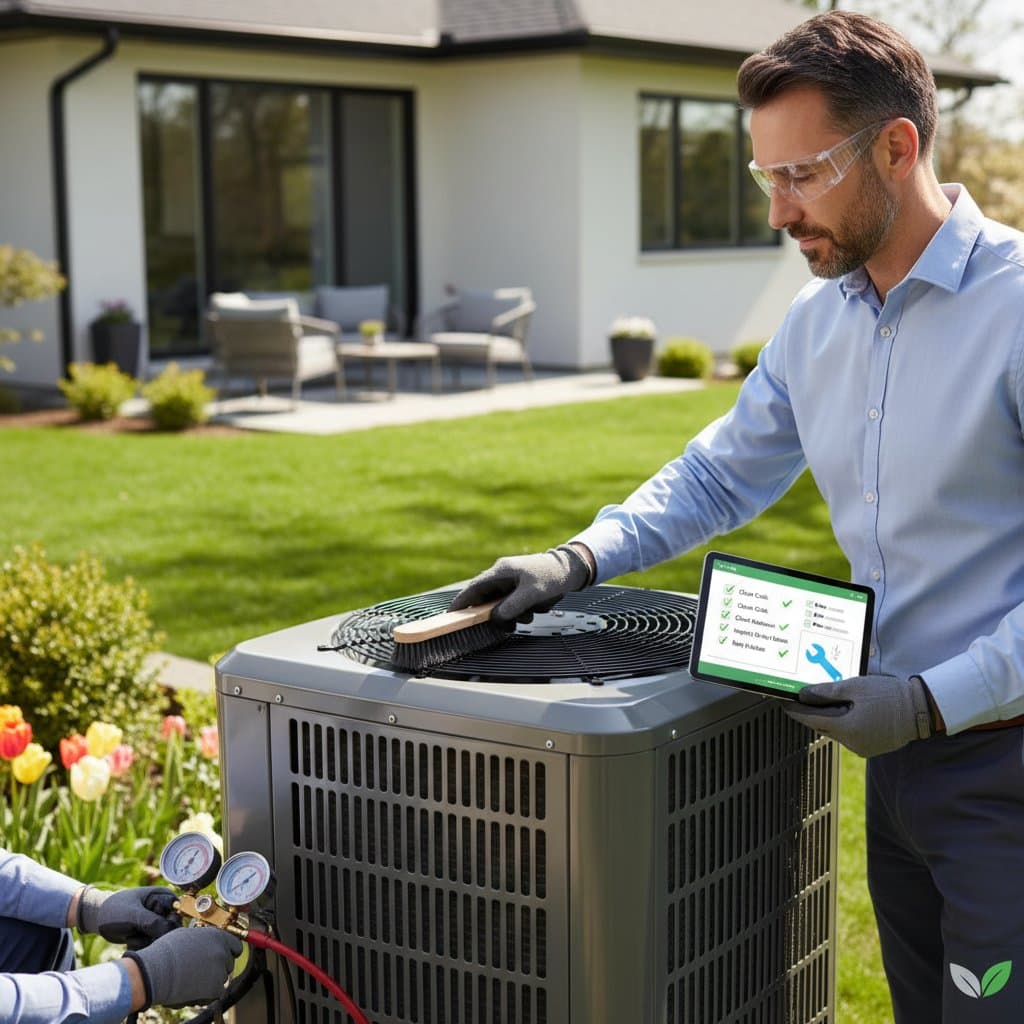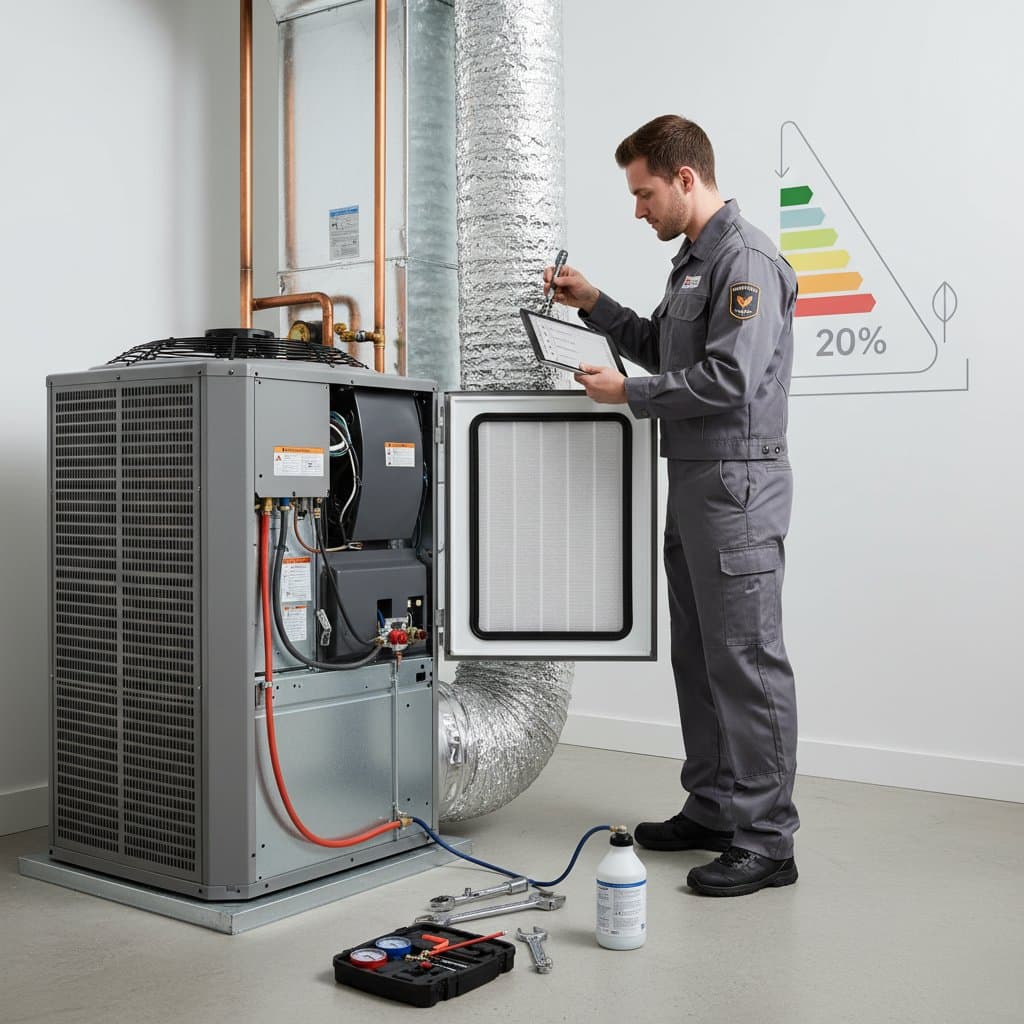Prepare Your AC Early for a Reliable Summer
As temperatures rise, reliable air conditioning becomes essential for home comfort. Delaying maintenance until the heat intensifies often results in unexpected breakdowns, extended wait times for service, and elevated expenses. Addressing your system now minimizes these risks, ensures efficient operation, and maintains a comfortable indoor environment throughout the season.
Financial Impact of Postponed Maintenance
Homeowners frequently overlook routine AC checks until issues arise. At that point, minor problems escalate into significant repairs. For instance, a blocked air filter or soiled evaporator coil compels the unit to operate inefficiently, potentially increasing energy consumption by thirty percent.
Technicians report that systems lacking regular care diminish in longevity by several years. A basic maintenance visit costs between one hundred and two hundred dollars, a fraction of the one thousand dollar plus price tag for replacing a failed compressor. Proactive measures safeguard against such outcomes and optimize performance during high-demand periods.
Components of a Comprehensive AC Maintenance Visit
Professional servicing extends beyond filter changes to encompass a thorough evaluation of all key elements. Technicians perform these essential procedures during an early-season appointment:
- Examine and clean evaporator and condenser coils to enhance heat transfer and decrease power usage.
- Verify refrigerant charge to avoid diminished cooling capacity or undue stress on the compressor.
- Secure electrical wiring and connections to prevent interruptions or hazardous malfunctions.
- Apply lubricant to fans and motors to minimize friction, noise, and component degradation.
- Flush the condensate drain line to eliminate blockages that could lead to water damage or microbial buildup.
- Calibrate the thermostat for precise temperature regulation and consistent comfort.
Each action contributes to overall reliability and operational safety. Neglecting any item risks accelerating wear or permitting minor faults to develop into critical failures amid summer peaks.
Homeowner Tasks to Perform Before Professional Service
Certain preparatory steps fall within the scope of basic homeowner capabilities, offering an initial boost to system efficiency. These actions require minimal time and tools.
- Swap out or wash air filters every month. Restricted airflow from accumulated dust strains the blower and reduces cooling effectiveness.
- Remove vegetation and debris from the outdoor condenser unit. Obstructions hinder ventilation and cause the unit to retain excess heat.
- Assess insulation on refrigerant lines. Frayed or absent coverings result in energy loss through unintended heat gain or escape.
- Review indoor supply and return vents. Ensure furnishings or dust do not impede circulation, promoting balanced air distribution.
Completing these in under an hour yields noticeable improvements in airflow and cooling response.
Selecting a Qualified HVAC Specialist
Quality varies among service providers, so discernment proves crucial. Seek contractors holding licenses and credentials from bodies like NATE or ACCA. Expect a comprehensive report detailing findings, performed tasks, and suggested follow-ups.
Experienced professionals communicate discoveries clearly, focusing on solutions rather than solely on billing. Inquire about guarantees for workmanship and components. Reliable firms offer ongoing support and assist in establishing a maintenance schedule.
Duration and Process of a Standard Service Call
Most tune-ups span forty-five minutes to two hours, influenced by unit dimensions and existing state. Additional time arises if corrective work uncovers issues. The specialist evaluates operational cycles, assesses air volume, and confirms refrigerant metrics align with factory guidelines.
Booking in advance sidesteps seasonal overloads, when providers prioritize urgent interventions. This timing also facilitates sourcing parts for any surprises detected.
Deciding Between Repair and System Upgrade
For air conditioners exceeding ten years of age or demanding repeated fixes, professionals often advise modernization. Replacement units range from four thousand to eight thousand dollars yet deliver up to twenty percent better energy efficiency. Such gains recoup investments through sustained utility reductions.
Viable older systems benefit from targeted enhancements, including programmable thermostats or ductwork reinforcements, to elevate performance without comprehensive overhaul.
Strategies to Minimize Ongoing Risks
Establishing annual servicing before warmer months emerge forms the cornerstone of prevention. Document each intervention to monitor trends in efficiency and condition.
Address indicators like reduced airflow, inconsistent room temperatures, or atypical sounds without delay. Swift responses contain issues before they disrupt summer routines.
Advanced Recommendations for Optimal Results
- Adopt a forward-thinking mindset. View your AC as a vital asset requiring consistent oversight, akin to vehicle upkeep.
- Integrate efficiency practices. Employ ceiling fans for better air movement and adjust thermostat settings upward by two to three degrees to ease system load.
- Provide shade for the exterior unit. Positioning reduces operating temperatures, potentially boosting efficiency by ten percent.
- Address ductwork imperfections. Sealing gaps prevents loss of up to thirty percent of cooled air, per efficiency standards.
Diligent practices preserve not only functionality but also enhance property appeal. Prospective buyers value dependable, low-consumption HVAC setups.
Securing Long-Term Comfort and Savings
Initiating AC preparation ahead of peak heat guarantees seamless operation and tranquility. This upfront effort translates to diminished utility costs, averted major expenditures, and superior reliability.
Focus on these measures to shift emphasis from system concerns to everyday enjoyment. Act now through self-guided checks or expert consultation to equip your home for enduring seasonal comfort.





